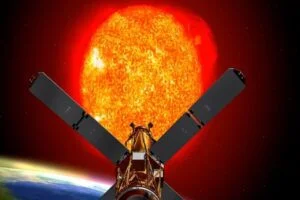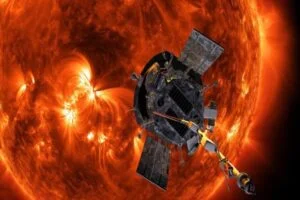Aditya-L1 began its 110-day journey from Earth’s orbit
Tuesday marked the Aditya-L1‘s departure from Earth’s orbit and the start of its 110-day voyage to the Sun’s Lagrange Point -1 (L1). The Trans-Lagrangean Point 1 Insertion (TL1I) maneuvre, which was critical, was successfully completed by the Indian Space Research Organization (ISRO).
Spacecraft heading toward Sun-Earth Lagrange Point 1
The crucial maneuver, which was performed at 2:00 am on Tuesday, launched the spacecraft in the direction of the sun and out of Earth’s orbit. Currently, the spacecraft is heading toward the Sun-Earth Lagrange Point 1. After roughly 110 days, it will be maneuvered into an orbit around L1 and released, according to an ISRO statement on X.
Aditya-L1’s 110-day journey to Lagrange Point 1
According to ISRO, the data gathered at L1 would shed light on the genesis, acceleration, and anisotropy of solar wind and space weather occurrences. The TL1 maneuvers signal the start of Aditya-L1’s 110-day journey to Lagrange Point 1, which is only 1% of the distance between Earth and the Sun and is located roughly 1.5 million kilometers from Earth.
TL1I maneuver aligns Aditya-L1 with unique space spot
In order to connect Aditya-L1’s trajectory with this special location in space, the TL1I manoeuvre, a challenging celestial ballet, is necessary. “Let’s go to the Sun-Earth Lagrange Point 1! Successful execution of the Trans Lagrangian Point 1 Insertion (TL1I) maneuver. The spacecraft is currently on its way to the Sun-Earth Lagrange Point 1.
After roughly 110 days, it will undergo a maneuver that will place it into an orbit around L1. The ISRO announced on its official ‘X’ account that this was the fifth time in a row that it has successfully transferred an object on a trajectory toward another celestial body or location in space.
Will be able to maintain its non-obstructive position with less fuel usage thanks to this occurrence. Furthermore, the space agency reported that this was the fifth time in a row that ISRO has successfully transported an object on a trajectory to another celestial body or location in orbit.
In a related development, ISRO reported on Monday that scientific data collection had started on the Supra Thermal and Energetic Particle Spectrometer (STEPS) instrument, a critical part of the Aditya Solar Wind Particle Experiment (ASPEX) payload. STEPS is a set of six sensors that were created by the Physical Research Laboratory (PRL) with assistance from the Space Application Centre in Ahmedabad.
Each sensor performs observations in a different direction and measures supra-thermal and energetic ions with energies between 20 keV and 5 MeV per nucleon as well as electrons with energies greater than 1 MeV. These observations, which are carried out with the aid of low- and high-energy particle spectrometers, offer priceless insights into how particles orbiting the Earth behave, particularly when the planet’s magnetic field is present.
“STEPS was activated on September 10, 2023, at a distance exceeding 50,000 kilometers from Earth. This distance, far beyond Earth’s radiation belt zone, is equivalent to more than 8 times the planet’s radius. Data collection continued once the requisite instrument health checks were finished up until the spacecraft traveled more than 50,000 kilometers from Earth. The STEPS units are all functioning normally, according to ISRO.
One of the STEPS units, according to ISRO, has already produced a graph showing observations showing changes in the energetic particle environment within the Earth’s magnetosphere. As Aditya-L1 moves closer to the Sun-Earth Lagrange Point 1 point during the cruise phase of the mission, these measurements will continue to be made. Once the spacecraft is in its intended orbit, these will continue.
Aditya-L1 Launched: The Countdown to Unveiling Cosmic Mysteries








